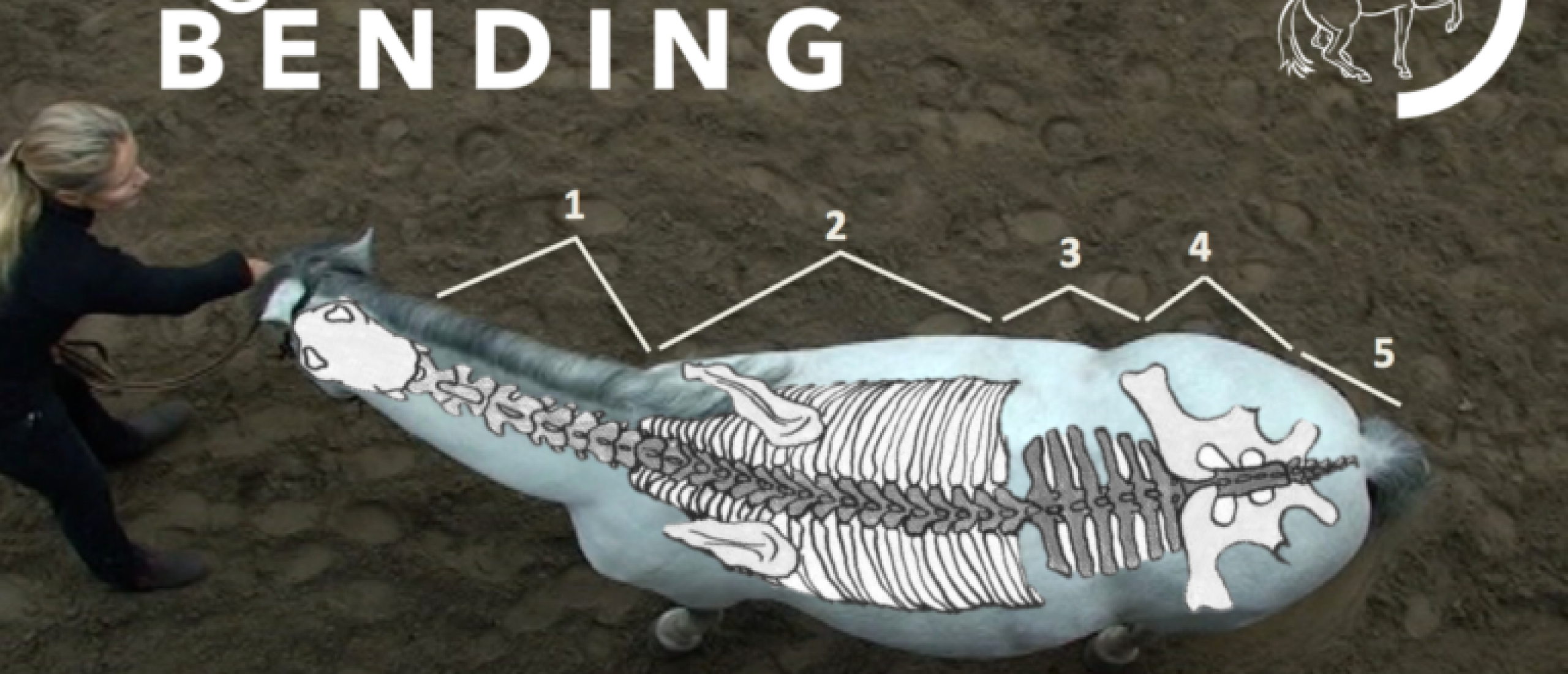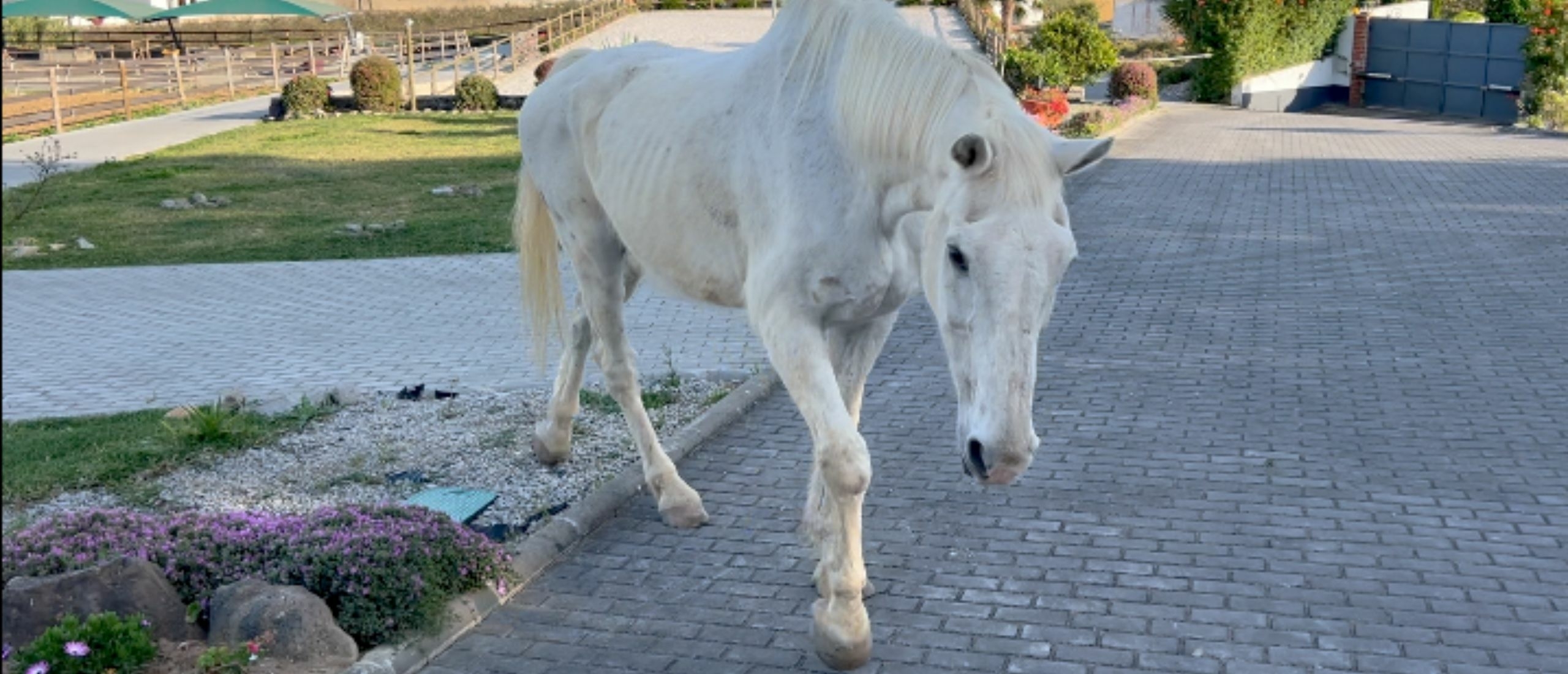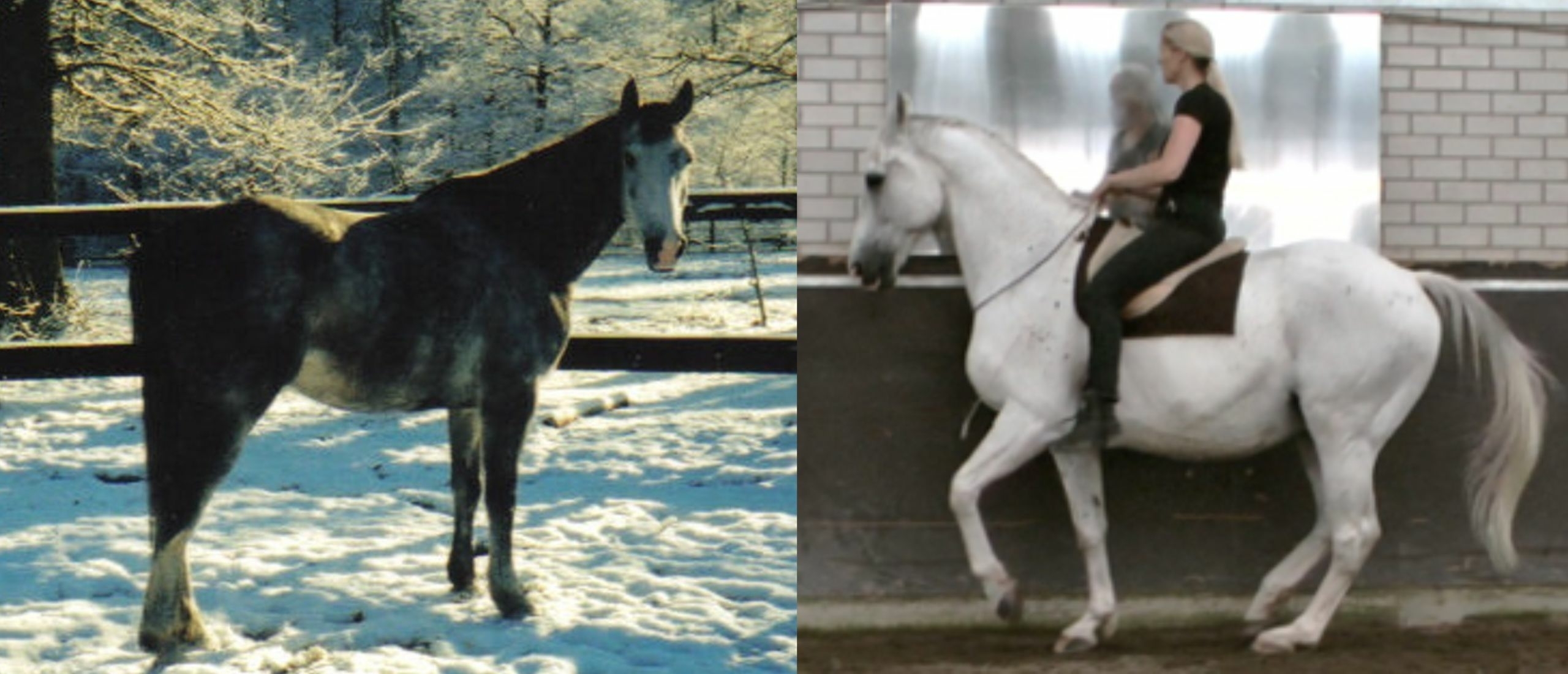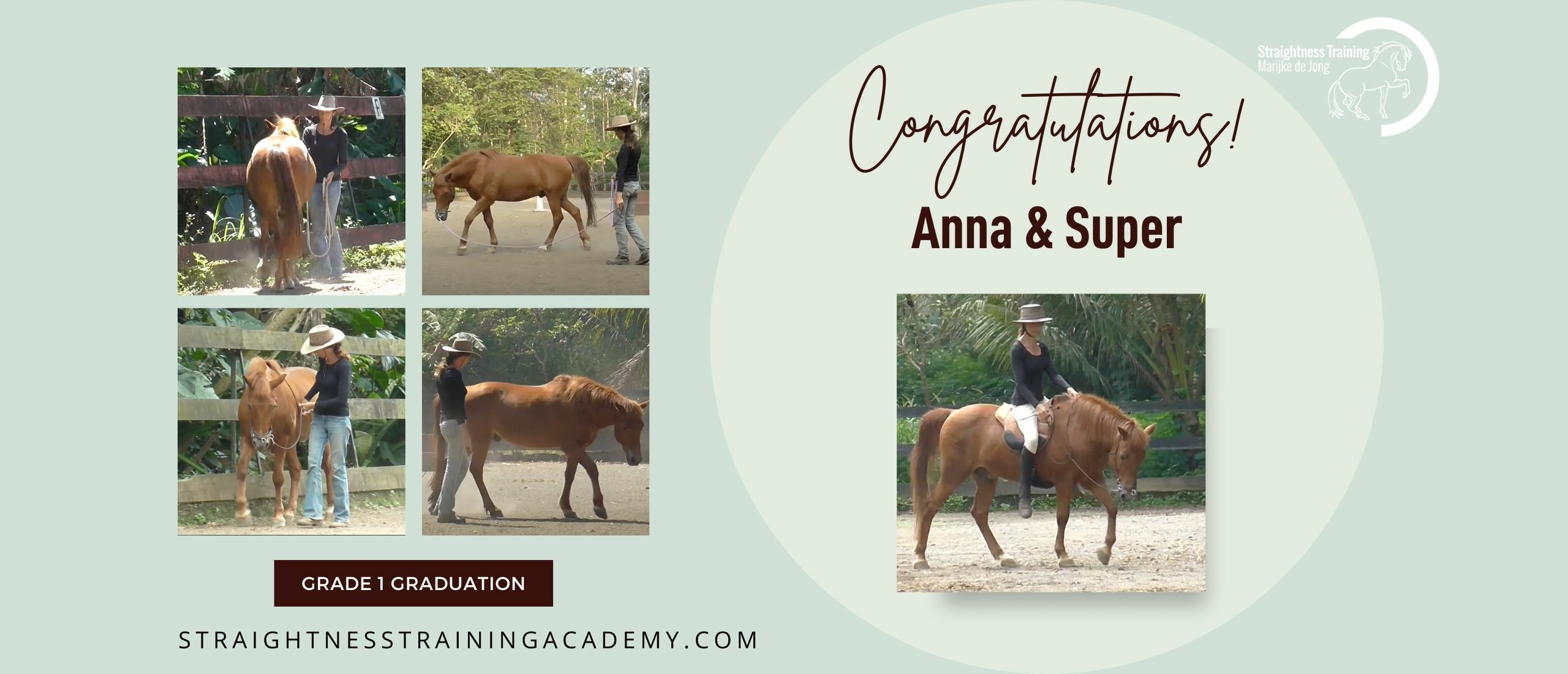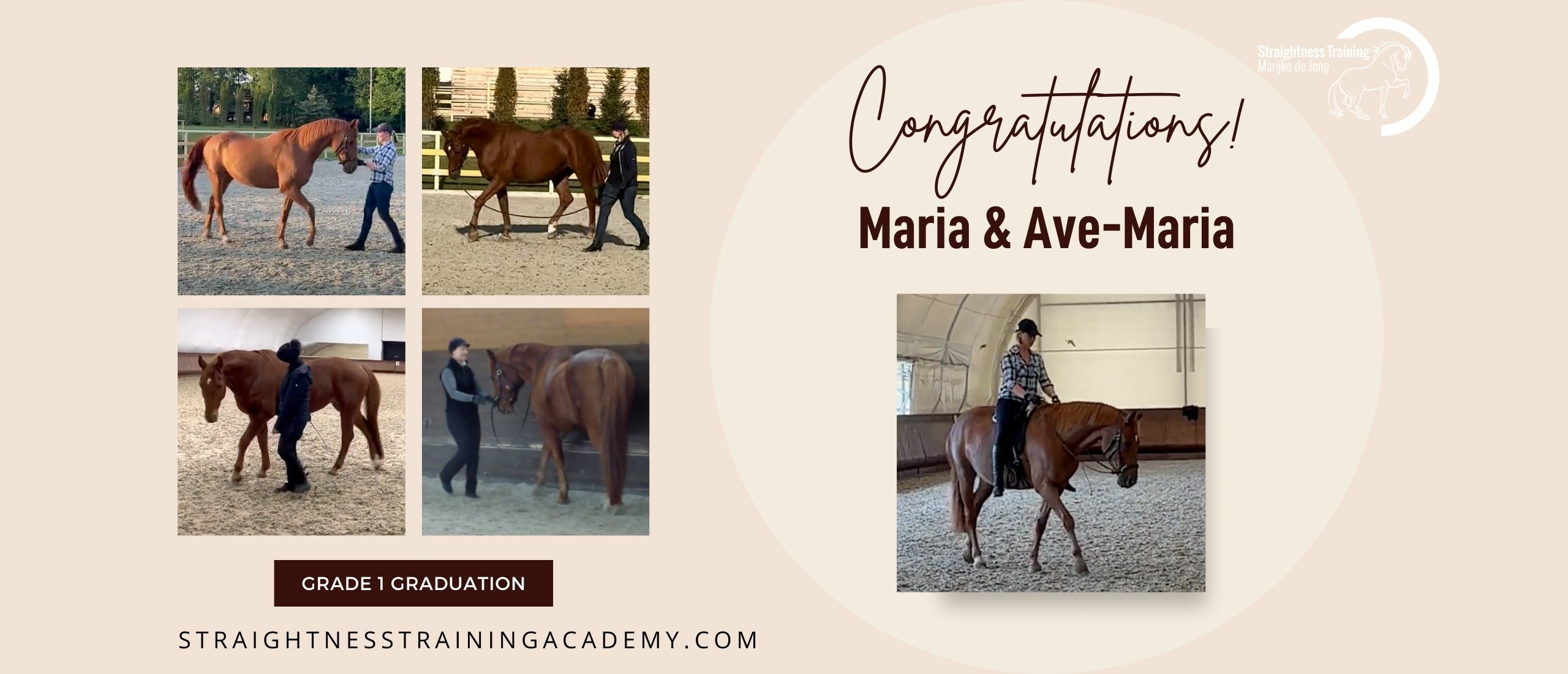In Straightness Training we perceive a semantic difference between the lateral bending of the spine and the lateral bending in the whole body: 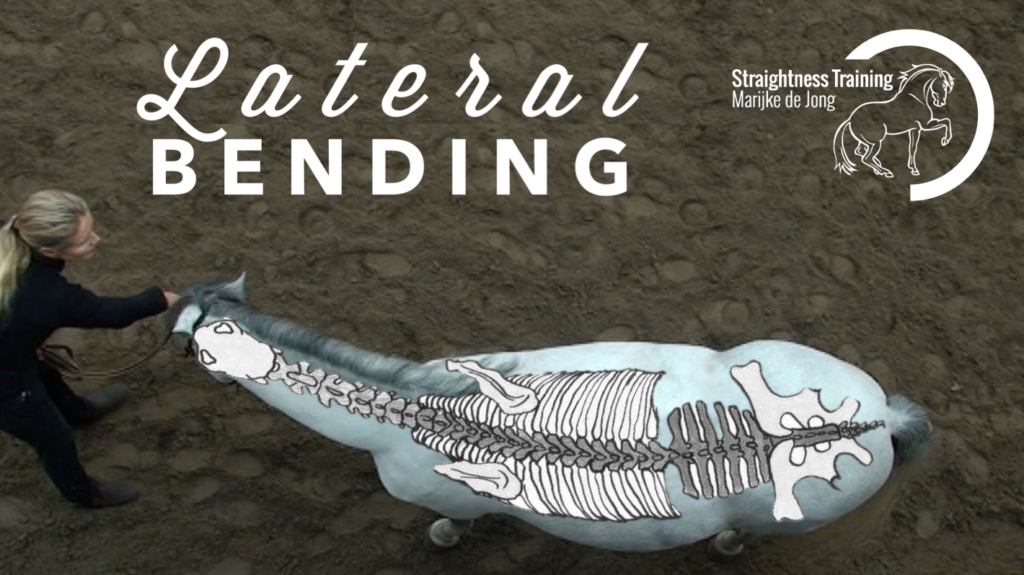 ● The lateral bending in the SPINE, is a dimension of spinal movement and it is the phsycial ability to bend more or less in certain areas of the spine. How much an area - neck, chest, behind the saddle, croup, tail - can bend, depends on the shape of the vertebrae (body, spinous process) and the construction (connected to ribs, other vertebrae or not). Therefore, the flexibility of the spine differs in each part and depending on their location and construction a vertebra will move in three different directions: lateral bending, extension/flexion and rotation to create the 'illusion' of an equal lateral bend in the whole body.
● The lateral bending in the SPINE, is a dimension of spinal movement and it is the phsycial ability to bend more or less in certain areas of the spine. How much an area - neck, chest, behind the saddle, croup, tail - can bend, depends on the shape of the vertebrae (body, spinous process) and the construction (connected to ribs, other vertebrae or not). Therefore, the flexibility of the spine differs in each part and depending on their location and construction a vertebra will move in three different directions: lateral bending, extension/flexion and rotation to create the 'illusion' of an equal lateral bend in the whole body.
● The lateral bending in the BODY, concerns the whole body. It is a collective name that we use in Straightness Training for everything that happens in the horse’s whole body (muscles, legs, spine, bending, rotation, flexion, etc.) to gain the ability to bend with the arc of the circle in both directions and to allow the body to do lateral movements. This 'lateral bending’ is a metaphor, a figure of speech, because a lot of factors together will create the 'illusion' of lateral bending the body. So when people start to argue that lateral bending is 'wrong' or 'not possible', it's sometimes just a semantic discussion ;)
To shine a bit more light on the phenomenon 'lateral bending', here's an article where you'll read more about the differences, you'll discover how the metaphor originiated due to history, and what research has to say about spinal movement, plus how the metaphor is practiced in ST:
► Click HERE For The Article >>
Join My Free Training
Jump on over to my free training were you get a three-step process for implementing Straightness Training in your training sessions right now. Watch two videos and download your free eBook about the ST Exercises which will help you put the information into action right away: 


